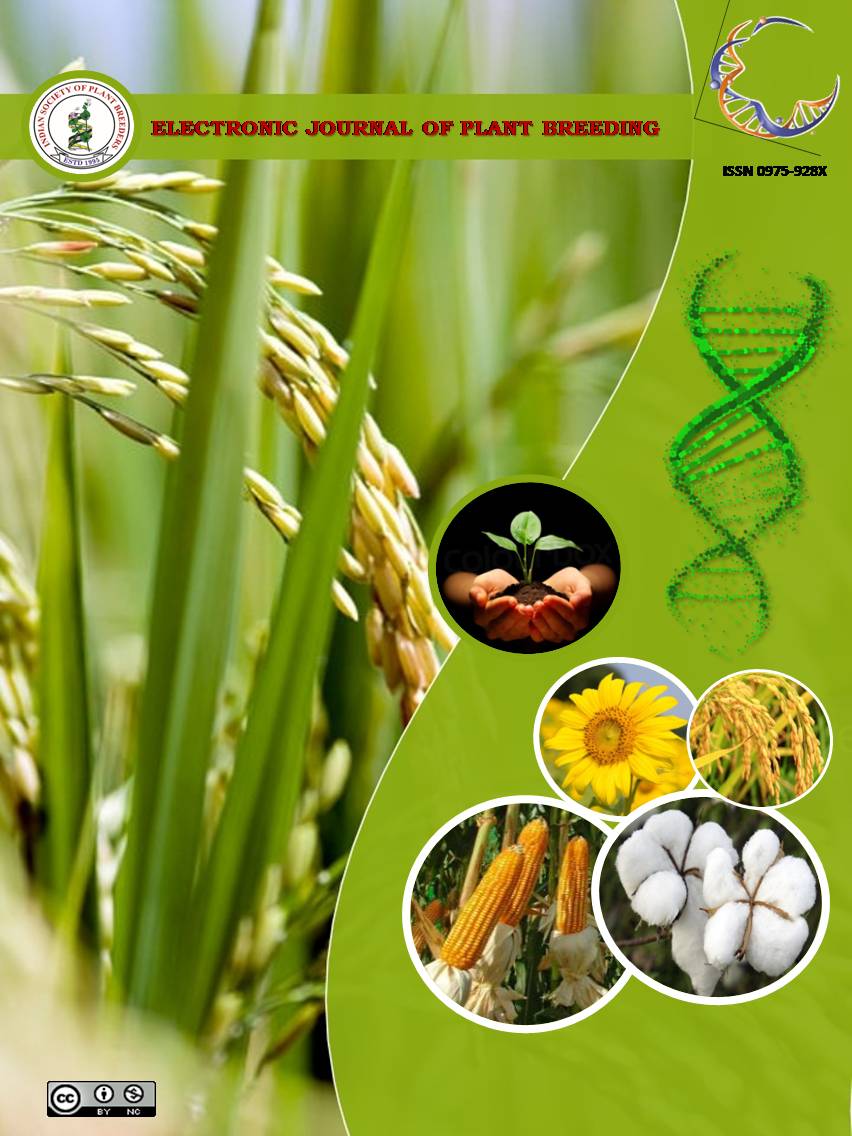Combining ability effects and heterotic grouping in newly developed early maturing yellow maize (Zea mays L.) inbreds under sub-tropical conditions
Abstract
A field experiment was conducted at Experimental Farm, Shivalik Agricultural Research and Extension Centre, Kangra representing subtropical conditions of north western Himalayasecology during Kharif 2017 to estimate combining ability of newly developed early maturing yellow maize inbred lines. Twenty two crosses were generated by crossing 11 new developed yellow maize inbreds with 2 diverse testers using Line x Tester mating design. The experiment was conducted using randomized block design with two replications. The mean square due to genotypes, parents and parents v/s crosses were significant for all the traits, except for days to 50 per cent silking due to genotypes, kernel rows, days to 50 per cent tasseling and days to 50 per cent silking due to parents. This revealed presence of appreciable amount of genetic variability in the experimental material of the present investigation. The ratio of σ2gca / σ2sca for all the studied traits indicated the preponderance of non-additive gene effects in the inheritance of these traits. Among female inbred lines, L9 had significant GCA effects for grain yield per plant (21.64) and yield component traits like shelling percentage (3.24) , ear length(2.37), ear diameter(1.07), number of kernels/row(3.84) and 1000- kerenel weight (8.68) , indicated that best general combiner for these traits, while in male parent T2 was the best general combiner for yield contributing traits viz., ear length (0.47), ear diamter (0.19), number of kernel rows per ear (0.59), number of kernels/row (1.02) and 1000-kernel weight (10.05). On the basis of mean grain yield and SCA effects, three test crosses, viz., L9xT2, L5xT1, and L1xT1 were identified most promising and may be further tested at multi environments for use as single cross hybrids. L9xT2 manifested highest mean grain yield (102.17g/plant) and significant positive specific combining ability effect (15.93). Based on the SCA effect for grain yield, the newly developed inbreds were classified into two heterotic groups. The lines L1, L2, L4, L5 and L6 belonged to tester group CM-212, while L3, L9, and L11 belonged to heterotic group of HKI-1105. Inbred lines assigned into two opposite heterotic groups could be used as parents to develop hybrids and inbred lines with same heterotic group with positive GCA may be used for synthetic variety development.

It is certified that:
- The corresponding author is fully responsible for any disputes arising due to the publication of his/her manuscript.
- The article has been seen by all the authors who are satisfied with its form and content.
- The sequence of names of authors in the by-line is as per their relative contribution to this experiment, giving due credit to all scientists who made notable contribution to it.
- All the authors fully understand that inclusion of any other co-authors or exclusion of any co-authors is not possible once the article has been submitted to the journal.
- The corresponding author takes full responsibility for this article.
- The address of the organization where the research was conducted is given.
- The article is exclusive for this journal, and the results reported here have not been sent (and will not be sent during its consideration by this journal) for publication in any other journal.
- Authors agree to abide by the objective comments of referees and do agree to modify the article into a short note as per the recommendation, for publication in the Electronic Journal of Plant Breeding.
- If published in Electronic Journal of Plant Breeding, the copyright of this article would vest with the Indian Society of Plant Breeders, who will have the right to enter into any agreement with any organization in India or abroad engaged in reprography, photocopying, storage and dissemination of information contained in it, and neither we nor our legal heirs will have any claims on royalty.


